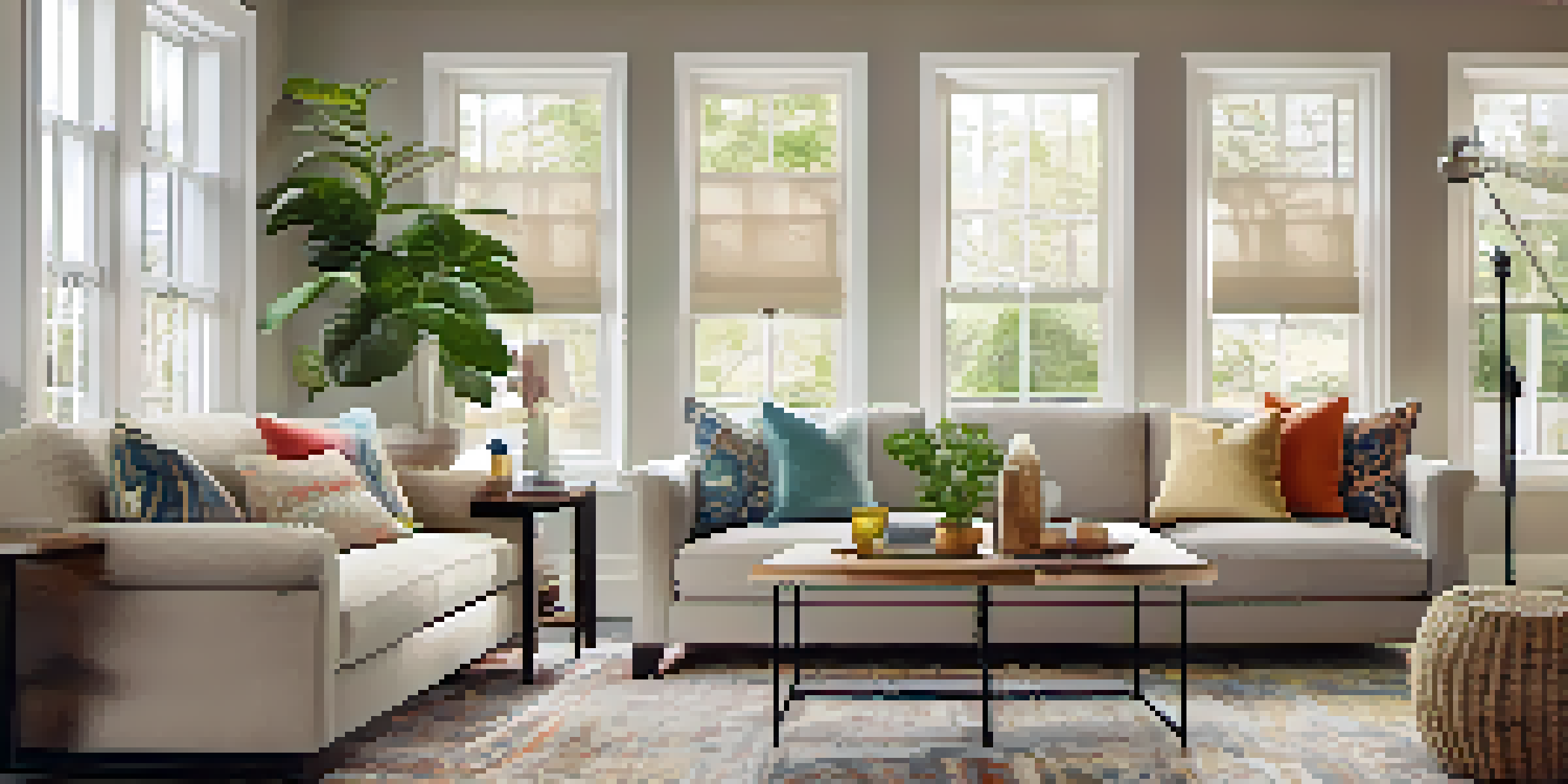The Role of Staging in the Home Flipping Process

What is Home Staging and Why is it Important?
Home staging is the process of preparing a residential property for sale. It involves rearranging furniture, adding decor, and sometimes making minor repairs to create a welcoming atmosphere. This practice is crucial in home flipping, as it helps potential buyers envision themselves living in the space.
Staging a home is like preparing for a performance; it’s all about creating an atmosphere that captivates the audience.
When a home is staged effectively, it can create an emotional connection with buyers. This connection often leads to faster sales and can even increase the final selling price. Think of staging as dressing a model for a fashion show; the right presentation can make all the difference.
Ultimately, effective staging highlights a home's best features while downplaying any flaws. This balance is key in attracting buyers and making a lasting impression that encourages offers.
How Staging Impacts Home Value
Staging can significantly impact a property's perceived value in the eyes of potential buyers. Homes that are staged tend to sell for a higher price compared to non-staged homes. This is because staged homes look more inviting and well-maintained, which often translates to a higher market demand.

In fact, studies have shown that staging can lead to a return on investment of up to 10% or more. This means that for every dollar spent on staging, sellers could see a return of $10 in sale price. It's an investment that can yield substantial financial rewards.
Home Staging Boosts Sale Price
Staging a home can lead to a higher selling price and a quicker sale due to its inviting appearance.
Moreover, homes that are staged often sell faster, which can save sellers money on carrying costs like mortgage payments and utilities. This speed can be crucial in the competitive real estate market, where time is often of the essence.
The Psychology Behind Staging
Staging taps into the psychology of homebuyers, creating a space that feels inviting and cozy. A well-staged home can evoke emotions that make buyers feel like they belong there. This emotional connection is a powerful motivator that can lead to quicker decisions and stronger offers.
You never get a second chance to make a first impression.
By highlighting the best features of a home, staging helps buyers visualize their lives in the space. For instance, a beautifully set dining table can spark thoughts of future family gatherings, while a cozy reading nook can inspire a sense of tranquility. These visions can be the difference between a casual looker and a committed buyer.
Additionally, staging can also help buyers overcome any initial skepticism about a property. A clean, well-organized space can alleviate concerns about age or necessary repairs, allowing potential buyers to focus on the home's possibilities rather than its shortcomings.
Choosing the Right Staging Style
When it comes to staging, one size does not fit all. Different homes and target buyers may require different staging styles. For example, a modern, minimalist approach might appeal to young professionals, while a cozy, traditional style may attract families.
It's essential to consider the demographic of potential buyers when choosing a staging style. Researching local market trends and understanding buyer preferences can guide staging decisions towards what's likely to resonate. This strategic approach can make a staged home feel more relatable and appealing.
Emotional Connection is Key
Effective staging creates an emotional connection that helps buyers envision their lives in the home.
Ultimately, the goal is to create a cohesive look that showcases the home's best attributes while ensuring it feels welcoming and lived-in. This balance can make all the difference in attracting the right buyer.
DIY Staging vs. Professional Staging
Many home flippers face the decision of whether to stage their properties themselves or hire a professional staging service. DIY staging can save money but may not achieve the same level of impact as a professional's expertise. A trained stager knows how to highlight a home's strengths and create a cohesive aesthetic.
On the other hand, DIY staging allows for personal touches and can be a fun, creative process. Home flippers who have an eye for design may find that they can effectively stage their properties without breaking the bank. However, it’s crucial to assess whether time and skills align with the desired outcome.
Ultimately, the choice between DIY and professional staging will depend on the specific property and market conditions. Evaluating the potential return on investment, as well as personal capabilities, can guide this important decision.
Common Staging Mistakes to Avoid
Even the best-intentioned home flippers can make staging mistakes that detract from a home's appeal. One common error is overcrowding a space with too much furniture or decor, which can make rooms feel cramped. It's important to remember that less is often more when it comes to staging.
Another frequent misstep is neglecting clean and fresh spaces. A dirty or cluttered home can turn off potential buyers instantly. Ensuring that a home is clean, decluttered, and well-maintained is crucial in making a positive impression.
Avoid Common Staging Mistakes
Overcrowding spaces, neglecting cleanliness, and failing to depersonalize can detract from a home's appeal.
Finally, failing to depersonalize a space can hinder buyers from imagining themselves in the home. Personal photos and unique decor can be distracting, making it harder for buyers to visualize their own lives in the property. A neutral, inviting environment is key to successful staging.
Measuring the Success of Staging
After staging a property, it's essential to measure its success in the home flipping process. One way to gauge effectiveness is by tracking the time on the market before and after staging. A significant reduction in days on market can indicate that staging had a positive impact on buyer interest.
Another metric is the sale price compared to similar non-staged homes in the area. An increase in selling price can demonstrate the financial benefits of staging. Keeping an eye on these statistics can help home flippers refine their staging strategies for future projects.

Finally, feedback from potential buyers and real estate agents can offer valuable insights. Constructive criticism can guide future staging efforts, ensuring that home flippers continue to improve their approach and maximize their success in the market.